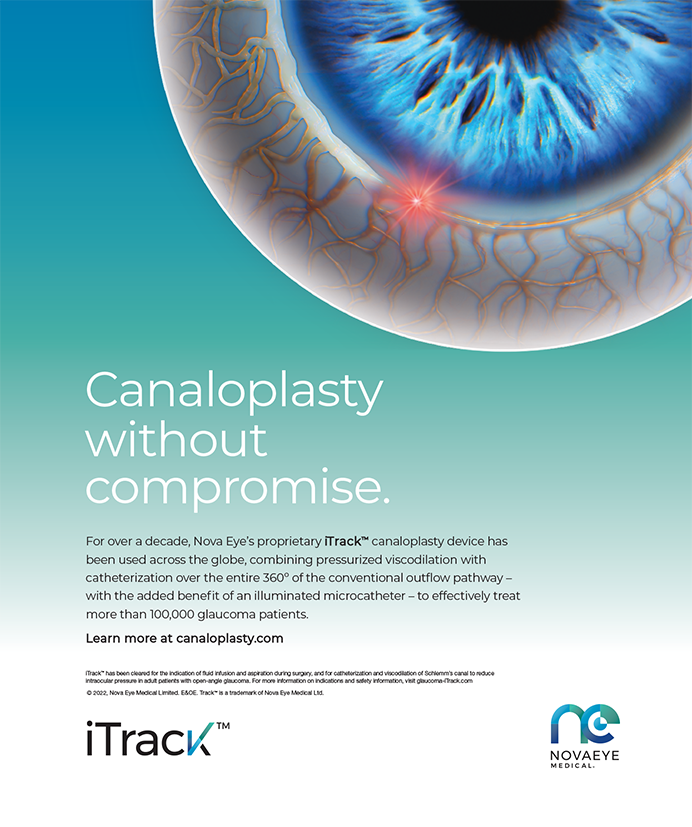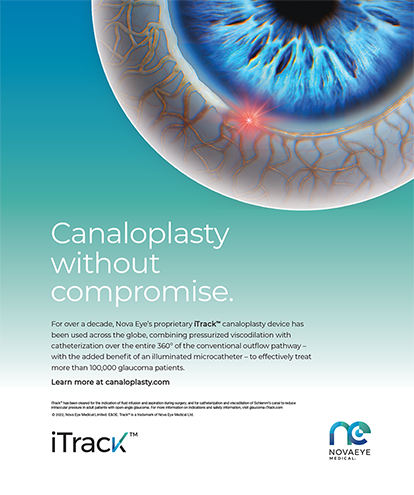Arsham Sheybani, MD: We are going to explore some of the big questions surrounding the MIGS space. Do we currently have a clear definition of MIGS, despite the initial publications that set out to define it? Is there a consensus on which devices and procedures fall into this category? Rob, why do you think MIGS might be having an identity crisis?
Robert Chang, MD: I started practicing in 2009, and the first minimally invasive device I used was the Trabectome (MicroSurgical Technology). Given the many side effects of filtering surgery, there was an unmet need filled by MIGS procedures, which were often clustered by site of action. After offering ab externo canaloplasty, which still touched the conjunctiva, it was exciting to perform less-traumatic ab interno trabecular bypass procedures in 2012 when the first-generation iStent (Glaukos) became available. The early adopters of MIGS promoted its safety, but there were questions about efficacy. Thus, a crisis was born: Approvals were granted to more MIGS tools that could lower IOP, often in combination with cataract surgery, but it was hard to tell which patients would benefit from these procedures without empirically trying them. By sparing the conjunctiva, most MIGS users felt comfortable expanding this new group of procedures prior to filtering surgery, but the category blurred when subconjunctival procedures with mitomycin C entered the scene, such as the Xen Gel Stent (Allergan). Is a procedure still minimally invasive if bleb management is involved?
So, the definition of MIGS has evolved but traditionally focused on safety rather than efficacy. This is the trade-off between less risk but less IOP lowering. What we really need, however, is an endpoint such as visual field stability. Only now the first MIGS device is publishing those results (eg, the Hydrus Microstent [Alcon]). Because MIGS procedures can also be combined, there is a need for physician-initiated, multicenter, randomized controlled trials to answer the important questions about the best fit for all MIGS tools.
Dr. Sheybani: We talk about laser treatment as surgery, too, but we don’t lump options like selective laser trabeculoplasty into the MIGS space. What’s your take on these issues, Larissa?
Larissa Camejo, MD: It is human nature to want to organize things, especially when we are trying to discuss a concept with our colleagues and trying to offer guidance for best application of a specific new surgery or device. However, we should steer away from a black-and-white style of practice. The MIGS space consists a heterogeneous group of procedures. If you think about the different MIGS options from the iStent through the Xen, they involve completely different surgeries with different expectations for IOP lowering, different wound healing, and different postoperative care. I like to think about MIGS based on mechanism of action—angle-based, conjunctival, or supraciliary—but I choose a surgery for each patient based on the goal I want to achieve, which is what IOP and how many medications does the patient need to not progress from glaucoma and maybe even achieve improved vision?
We should celebrate the diversity of MIGS because it means more tools for us to use. The more we understand them all, the more we can use them all. I dislike the term go-to MIGS because our treatment decision-making truly depends on the patient. It is the same concept used in cataract surgery—tailoring and combining available options to provide the greatest efficacy and safety to the individual in our exam chair.
Dr. Sheybani: Shakeel, should we do a better job of grouping MIGS procedures based on their mechanisms of action in order to start comparing them better, or is that an improper way to go?
Shakeel Shareef, MD: Thinking about MIGS in crisis, I am reminded of Ike’s review article in Survey of Ophthalmology.1 He and his colleagues looked at evidence-based medicine in high-quality, peer-reviewed journals to provide guidance on the various MIGS procedures. They identified about 10,000 articles on MIGS, and only 20 studies met the high-quality inclusion and exclusion criteria—basically 0.2% of articles. This is alarming because, clearly, there is so much information out there, but we have a long way to go in terms of being able to use evidence-based medicine to determine where MIGS fits within our practice.
This research is important because it is how decision makers and policymakers determine whether to support MIGS. In a 2019 report out of Canada,2 a panel of health experts provided recommendations on the optimal use of MIGS based on the literature. The panelists concluded that the indiscriminate use of MIGS may not be cost-effective in certain subgroups, particularly in patients with mild or open-angle glaucoma in whom laser treatment may be more cost-effective. More studies like this would be beneficial.
Dr. Sheybani: Tosin, we have talked about some deficiencies in general, but why do you think we have issues with the adoption of MIGS?
Oluwatosin Smith, MD: I think it relates to expectations. Glaucoma specialists have high expectations of themselves, and we set high standards for our outcomes. I think the crisis with MIGS itself is not in what we know but in what we don’t know. There is so much we need to learn to improve the MIGS procedures we have. For example, why, 2 to 3 years after some MIGS procedures are performed, does efficacy start to dwindle? What happens with healing in the angle? What can we do better about outflow? Why does the suprachoroidal space shut down? If we can answer some of these questions, then perhaps more people will accept and embrace MIGS.
Dr. Sheybani: Jason, do you think MIGS labeling has gotten out of control? What are some of the issues that you see?
Jason Bacharach, MD: Compared with the initial articles written by Ike and others, our definitions of MIGS have changed dramatically over time. With this increased specificity, I think our nomenclature has become restrictive. For example, I am curious how many would consider the placement of a bimatoprost intracameral implant (Durysta, Allergan) a MIGS procedure. Rather than try to lump these various approaches into one category, forget the nomenclature and think about the procedure you are performing. Does it work? Does it stand on its own? That is how I look at it.
Dr. Sheybani: Ike, looking back, would you change anything about the initial definition of MIGS?
Iqbal Ike K. Ahmed, MD, FRCSC: The primary reason I thought we needed a definition for MIGS was to differentiate these procedures from trabeculectomy. That was the most important factor for me, particularly to help patients understand that MIGS is not the same as what they would find if they went on the internet and looked up glaucoma surgery. That was the main purpose, and I think it served us well for the most part.
It is important to recognize that bleb surgery is different than angle and supraciliary procedures. I view that as the biggest division. For me, this has always been about creating and participating in a movement. We don’t necessarily need to force our definition of MIGS on others. I think there are reasons to differentiate the procedures, and I encourage us all to explore ways to do that.
Dr. Camejo: The term MIGS automatically makes many think of early disease. As much as I like to advocate for early intervention, I find many MIGS procedures to be helpful as ancillary surgery. In a tertiary glaucoma clinic, performing a MIGS procedure instead of a second tube shunt surgery is, in my opinion, a better option for many patients. Sometimes, the labeling or staging restrictions get in the way of access to the best medical care for some patients. There are pseudophakic patients who might do better with a Hydrus Microstent than with conjunctival surgery and stable, quiet chronic angle-closure patients who would do great with a Xen, but neither of these approaches would be on label or paid for by insurance. As more studies are executed, perhaps we can broaden the indications and be able to help more patients.
Dr. Sheybani: It’s also true that the identity crisis is caused, in part, by the marriage of MIGS to cataract surgery. Until MIGS has its own unique identity, these conversations will likely continue.
1. Nichani P, Popovic MM, Schlenker MB, Park J, Ahmed IIK. Microinvasive glaucoma surgery: a review of 3476 eyes. Surv Ophthalmol. 2021;66(5):714-743.
2. Optimal use of minimally invasive glaucoma surgery: a health technology assessment. CADTH. January 2019. Accessed April 10, 2022. www.cadth.ca/sites/default/files/pdf/op0532-migs-science-report.pdf











